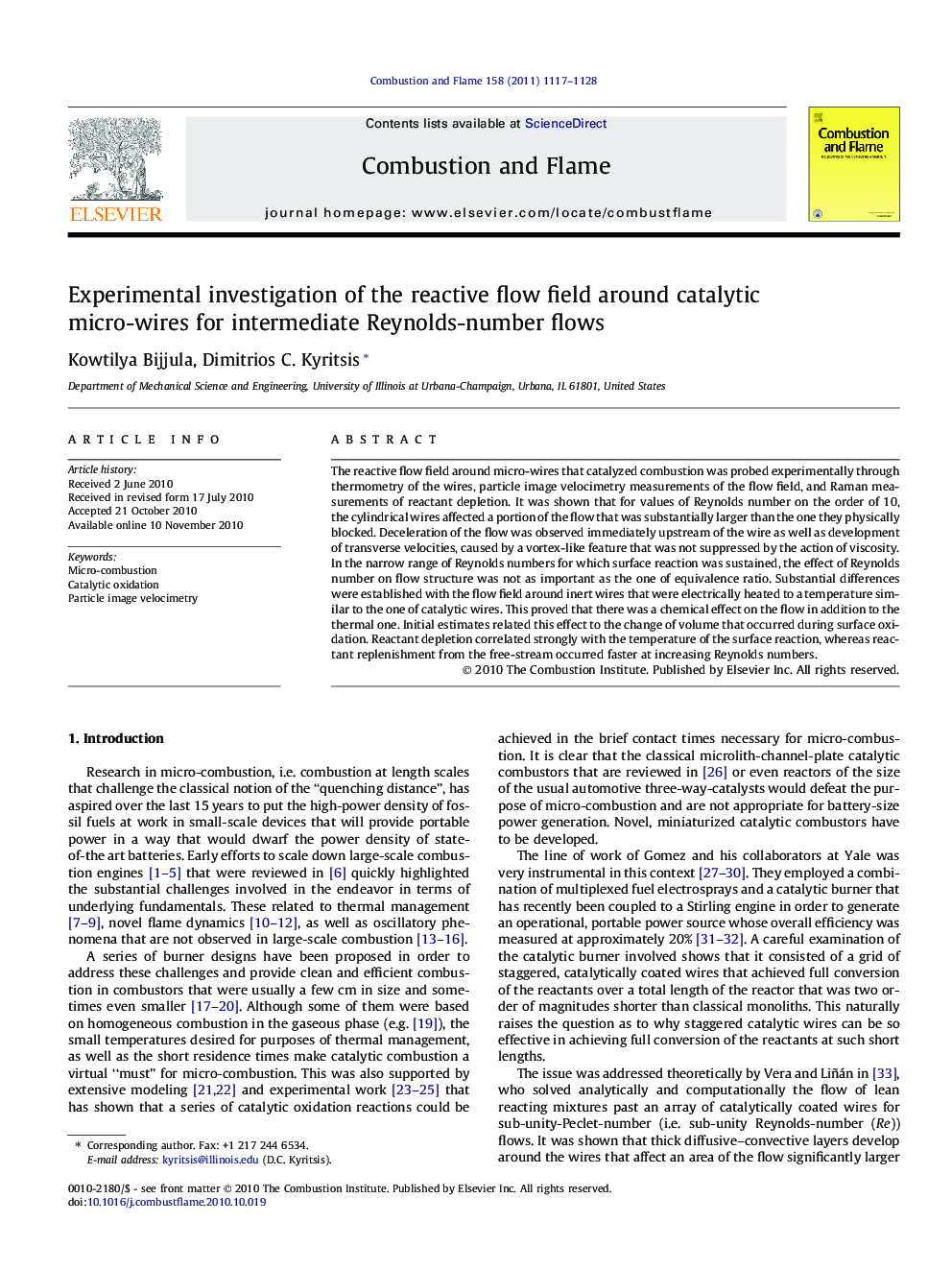| Article ID | Journal | Published Year | Pages | File Type |
|---|---|---|---|---|
| 169868 | Combustion and Flame | 2011 | 12 Pages |
The reactive flow field around micro-wires that catalyzed combustion was probed experimentally through thermometry of the wires, particle image velocimetry measurements of the flow field, and Raman measurements of reactant depletion. It was shown that for values of Reynolds number on the order of 10, the cylindrical wires affected a portion of the flow that was substantially larger than the one they physically blocked. Deceleration of the flow was observed immediately upstream of the wire as well as development of transverse velocities, caused by a vortex-like feature that was not suppressed by the action of viscosity. In the narrow range of Reynolds numbers for which surface reaction was sustained, the effect of Reynolds number on flow structure was not as important as the one of equivalence ratio. Substantial differences were established with the flow field around inert wires that were electrically heated to a temperature similar to the one of catalytic wires. This proved that there was a chemical effect on the flow in addition to the thermal one. Initial estimates related this effect to the change of volume that occurred during surface oxidation. Reactant depletion correlated strongly with the temperature of the surface reaction, whereas reactant replenishment from the free-stream occurred faster at increasing Reynolds numbers.
